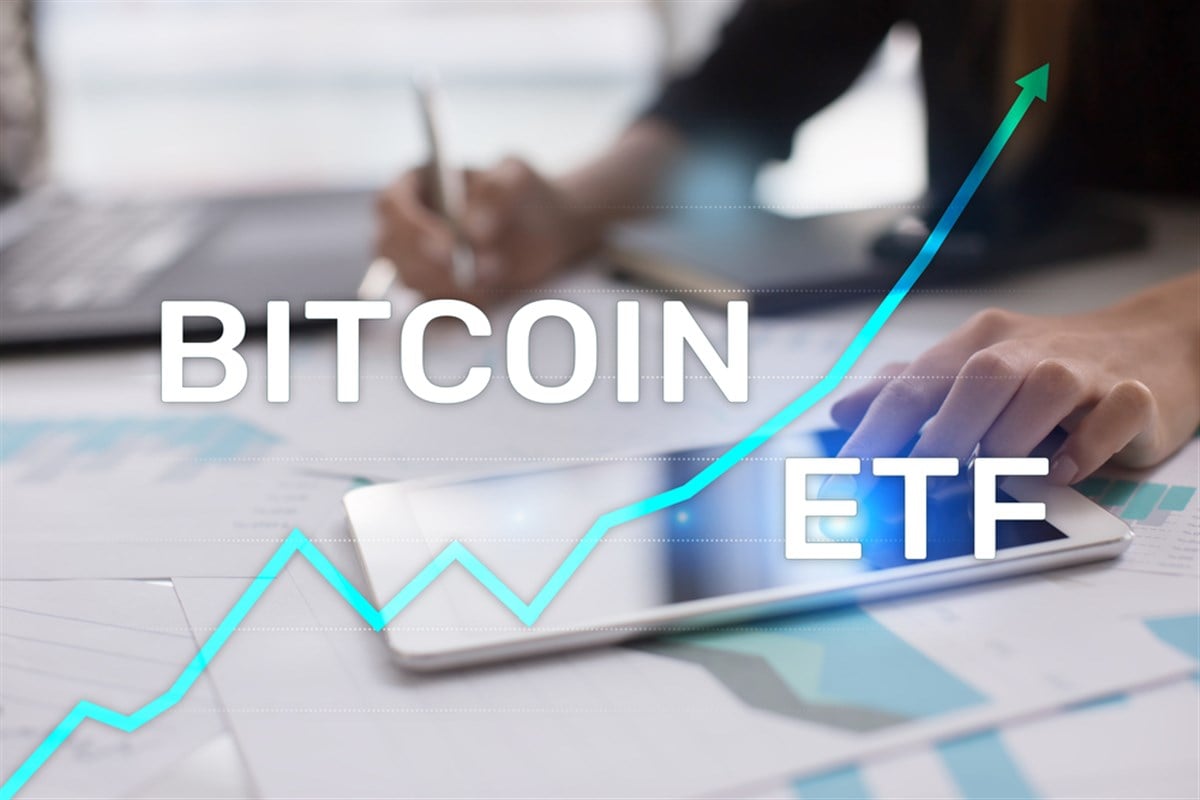
Spot Bitcoin exchange-traded funds, including the iShares Bitcoin Trust (NASDAQ: IBIT), Grayscale Bitcoin Trust (NYSEARCA: GBTC), Fidelity Wise Origin Bitcoin Fund (NYSEARCA: FBTC), ARK 21Shares Bitcoin ETF (BATS: ARKB) and Bitwise Bitcoin ETF (NYSEARCA: BITB), have seen redemptions in recent days, highlighting the volatile nature of these new securities.
However, analysts are forecasting plenty of room for Bitcoin to run, meaning that the current selling may be simply a round of profit-taking following a huge run-up in February and the first half of March.
BlackRock’s IBIT launched in late January 2024 and already has about $15 billion in assets, making it the fastest-growing ETF on record (in terms of assets).
Easy Access to Bitcoin
Spot Bitcoin ETFs offer an easy and convenient way for more investors to get in on cryptocurrency without having to buy Bitcoin directly.
Like the other Bitcoin ETFs, the iShares Bitcoin Trust chart shows it doing a good job of tracking the underlying crypto asset.
Bitcoin ETFs Launched with Low Fees
These ETFs have also been waiving fees to attract assets, which helped with the fast growth.
In a recent media interview, Michael Sonnenshein, CEO of crytpo asset manager Grayscale, said the company anticipates dropping fees for the Grayscale Bitcoin Trust ETF even further in the next few months.
The ETF's current expense ratio is 1.5%. That's significantly higher than the expense ratio of the largest Bitcoin ETF, the iShares Bitcoin Trust, whose expense ratio is 0.12%.
GBTC has posted higher outflows than some other Bitcoin ETFs, likely due to its fee structure as investors can access the same asset class for less.
Collectively, the 11 Bitcoin ETFs saw a whopping $500 million in outflows on March 20 as Bitcoin itself fell to $60,760, but rallied back to close above $64,000.
Grayscale, the largest Bitcoin ETF with $25 billion in assets, has seen outflows of over $1 billion in the last week. Grayscale has grown fast since it converted to an ETF from a trust in January.
In comparison, fast-moving asset gatherer IBIT has $15.20 billion in assets, all raised since the ETF’s launch on January 11.
Who's Buying Spot Bitcoin ETFs?
According to transaction records, the average size of a trade for BlackRock's IBIT ETF is about $13,000. That may sound like a large number, but in reality, it's peanuts for any institutional investor so that average trade size indicates retail investors have been piling into the ETF. That's a double-edged sword.
On the one side, IBIT and other Bitcoin ETFs have achieved their goal of attracting more retail investors to Bitcoin investing.
On the other side, that leaves these ETFs at greater risk of volatility as retail investors are faster to sell when an asset tanks. Institutional investors, on the other hand, tend to buy with longer time horizons in mind.
Other ETFs for Bitcoin-Related Stocks
The "picks and shovels" metaphor is familiar to most investors — it applies to a style of investing that involves buying stocks that provide goods and services, such as technologies, to other companies that create the end product.
For example, cryptocurrency stocks such as Coinbase Global Inc. (NASDAQ: COIN) and Marathon Digital Holdings Inc. (NASDAQ: MARA) are components of crypto ETFs such as the Amplify Transformational Data Sharing ETF (NYSEARCA: BLOK).
The BLOK ETF holds global equities rather than tracking the price of Bitcoin directly on exchanges.
ETFs that hold cryptocurrency stocks sold off immediately after the launch of spot Bitcoin ETFs, but rallied in February and March.
Future of Bitcoin ETFs
While the underlying asset is trading below its highs and sending spot Bitcoin ETFs lower, analysts still see tremendous potential for Bitcoin. In mid-March, analysts at London-based financial services company Standard Chartered said Bitcoin could rally to $150,000 this year and rise to $250,000 next year.
And if Bitcoin continues to rally, the value of the spot Bitcoin ETFs will increase.